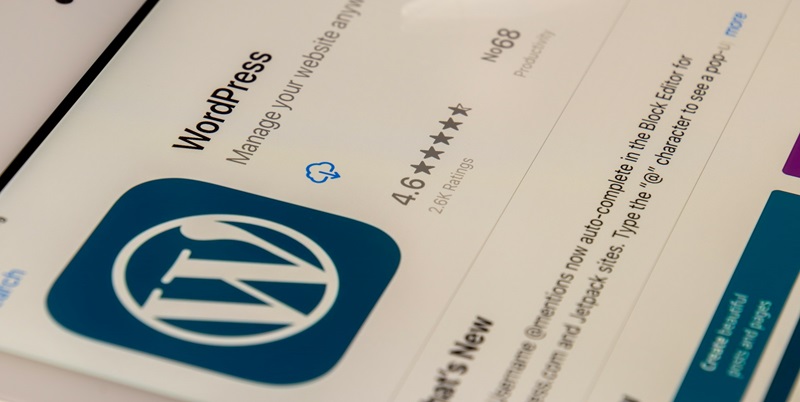WordPress serves as a foundational platform for a multitude of websites, but it’s not without its security woes. The extensive library of plugins—while beneficial for adding various features—can sometimes introduce weaknesses. These chinks in the armor often make WordPress sites appealing targets for cybercriminals.
A prime example of such vulnerabilities came to light with a severe flaw in the WordPress Automatic plugin. This incident underscored the importance of constant vigilance within the WordPress community. It highlighted that staying updated on the latest security patches and employing robust protective measures is crucial to safeguard websites.
Maintaining a WordPress site means committing to its security. Owners and developers must ensure they are swift to act when updates are released, especially for plugins, which can be tender spots in a website’s defense. The WordPress Automatic plugin flaw serves as a reminder of the potential risks and the responsibility that comes with managing a WordPress-powered site. To neglect these considerations is to leave your digital space open to avoidable breaches.
Thus, the event with the WordPress Automatic plugin is not just a cautionary tale but a prompt to action. Webmasters are urged to cultivate a proactive mindset toward the security of their websites. A combination of regular updates, security best practices, and an awareness of emerging threats is the trifecta for keeping WordPress sites secure in an environment where cyber threats are ever-evolving.
The Gravity of the WordPress Automatic Plugin Vulnerability
A state of high alert has pervaded the WordPress community as a critical vulnerability, identified as CVE-2024-27956, was disclosed by WPScan. With a staggering CVSS score of 9.8, the flaw in question laid the groundwork for attackers to not only infiltrate website databases but to potentially erect their dominion within them. By creating administrative accounts surreptitiously and deploying malicious software, disturbed undertakings could escalate, ushering in a wave of digital subjugation.
The urgency to act is twofold as both the threat and the response are monumental. Over five million exploitation attempts have stabbed at the heart of digital trust, pivoting website owners to a new perspective on security. Version 3.92.1 of the plugin, suffused with necessary fixes, emerges as the beacon to guide users out of the turmoil. Immediate upgrades are not simply recommended; they are the lifeline rescuing websites from the clutches of peril.
Understanding the Risks and Mitigation Strategies
Beyond the facade of convenience and functionality, plugins can bear unseen threats. The WordPress Automatic plugin vulnerability reveals the stark landscape where outdated software can serve as a conduit for digital chaos. SQL injections and unauthorized file uploads are but the tip of the iceberg, potential harbingers of total website compromise. Acknowledging the risk is paramount; confronting it demands swift and decisive tactics of mitigation.
Commencing with a patch application is the first stride in fortifying digital territory. Yet, the journey to cyber resiliency extends across the plains of regular vulnerability scans, prudent plugin access management, and principles of cybersecurity hygiene. A vigilant stance and informed understanding of one’s digital footprint can transform the narrative from one of vulnerability to one fortified by proactive watchfulness and insightful action.
Emphasizing the Role of Community Vigilance
In the tapestry of digital security, threads of shared responsibility and collective vigilance form the resilient weave shielding against threats. The WordPress Automatic plugin vulnerability traversed the community echo chambers rapidly, typifying the potency of communal knowledge. It is within this collaborative landscape that strength is bolstered, vulnerabilities shared, and strategies refined.
Encouraging participation in security forums, staying abreast of vulnerabilities, and sharing the spectrum of one’s security experiences catalyzes the strengthening of individual and collective defenses. Such community-led endeavors not only guard one’s own cyber bastion but also elevate the security stature of the larger WordPress ecosystem against the ever-evolving vanguard of threats.
The Importance of Security Best Practices
With foundational security best practices, the prospect of cyber resilience evolves from hope to reality. A multimodal approach towards choosing trustworthy plugins, setting formidable authentication barriers, and crafting an impregnable security posture lay down the groundwork for continual secure operations. It is the granularity of everyday actions—from creating robust passwords and enabling two-factor authentication to regimented backups—that erects the bulwark against digital adversity.
Inculcating these practices is not the preserve of the technologically adept; rather, they cast a net wide across the full spectrum of WordPress users. It is through the dissemination of best practices and fostering a culture of security that WordPress users can bolster their digital ramparts, irrespective of their proficiency with the platform’s nuances.
Proactive Measures: Beyond Just Updates
While updates stand as the cornerstone of security protocols, the expanse of preventive measures stretches beyond. Proactive security approaches—anticipating and preempting potential breaches—are critical underpinnings to a holistic cybersecurity strategy. Vigorous oversight of user permissions, the deployment of web application firewalls, and the adoption of cutting-edge security monitoring tools are part of an advanced proactive stance.
These prudent, foresighted strategies prepare WordPress users not only for present challenges but also prime defenses for future digital onslaughts. Integrating a comprehensive, proactive agenda into the routine care of WordPress sites ensures that not only are emergent threats met with readiness, but also that the foundations for enduring security are ever strengthened.

